Follow up emails are a must-do in the digital age whether you’re selling via cold contact, pursuing a job, following up with a prospect or existing customer. In eCommerce, follow up emails are essential for customer activation, retention, and repeat business. Sending effective follow up communications after key actions by customers is essential because it shows you’re listening and catering to their needs.
From abandoned shopping carts, to customer reviews, and even complaints, any time a customer interacts with your eShop, reaching out promptly to them is critical to keep the dialog going. This will drives transactions and, ultimately, satisfaction.
In this article, we will show you why follow up emails are crucial! You’ll learn about the 7 types of follow up emails you must master to succeed, and how to use them effectively within your eCommerce processes. And the best part? Nearly all of the follow ups can be automated with the right tool, so what’s not to love?
Why Follow Up Emails Matter
According to data from Shopify, time devoted to emailing customers is well spent with an ROI of $44.25 for every dollar spent on email marketing to clients. Follow up emails are vital to this effort. Follow up emails are usually more relevant to customers than other types of digital interaction because you’re extending a conversation they began.
Customers feel valued when you reach out to them in a way that’s personal and genuine. Automating the process need not take out the human element. Using an automated tool to optimize the process allows you to interact in a meaningful way that’s also efficient and cost-effective. Look at these seven types of follow up emails to add to your marketing regimen.
7 Types of eCommerce Follow Up Emails
1. Post Sign-Up Welcome Email
When customers subscribe to your newsletter or website contact list, almost 75% expect a confirmation and welcome email. Studies show that those that get a welcome email are 33% more likely to engage long-term with your eShop or eCommerce establishment.
A good post newsletter sign-up email should achieve one or more of the following goals:
- Say hello ?
- Confirm & reassure success on the recent transaction
- Introduce your brand
- Encourage social media interaction
- Inform about future communications
- Offer a reward. The reward can be a coupon, promo item, digital content, or links to interesting blog content on your site.
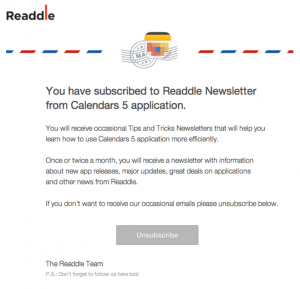
Example of Signup Confirmation Email from Readdle.
2. Product Review Responder Email
Customer feedback is invaluable (even if it’s negative), and responding to reviews can encourage future transactions, even after an adverse experience. More than 50% of customers expect to hear from a brand after a review, so don’t disappoint them.
After a customer purchase, a good way to continually engage with the customer is to solicit their feedback. This can be achieved with a review request associated with the product recently purchased.
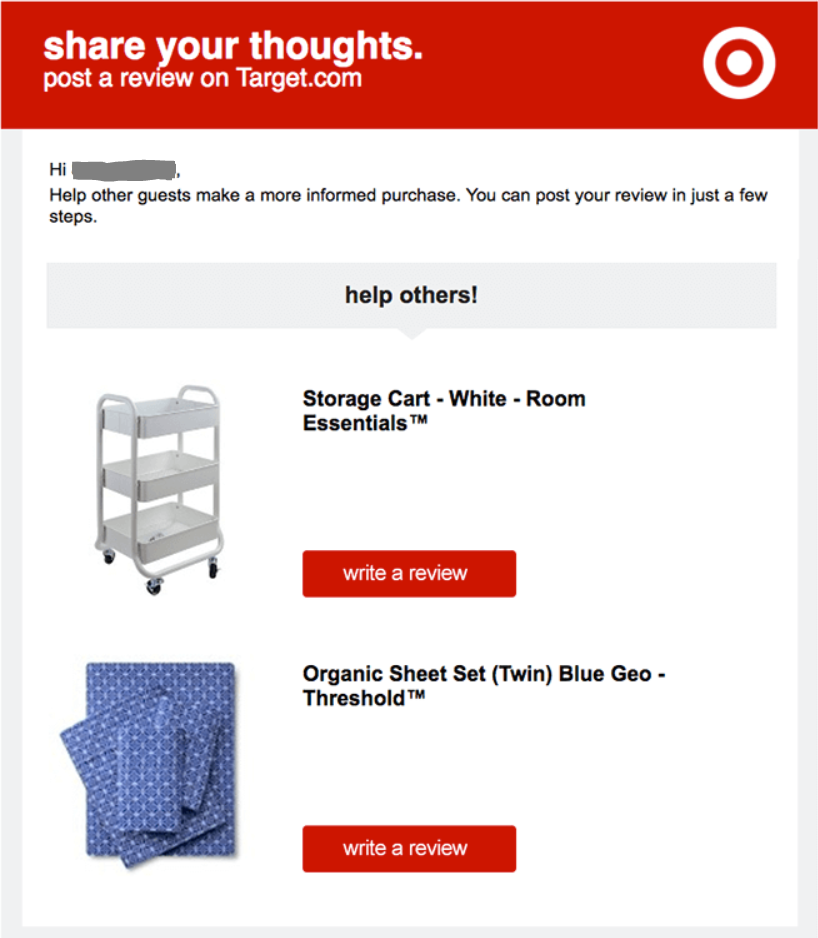
Example of Post Purchase Review Request from Target.
To thank the reviewer for boosting your product page SEO, influencing other buyers, and giving you information to improve products and service, give them an incentive to keep the transaction pipeline going. A percentage off coupon for their next purchase will be appreciated.
3. Brand Mention Follow Up Email
If you monitor your social media mentions and someone boosts your brand on Twitter, Facebook, Instagram, etc., they’ll appreciate you noticing and interacting with them. While a good way to reply is directly on the social channel. A follow up email is valuable when it comes to generating more dynamic and text-heavy contents.
With every email interaction, some sort of incentive should be included, but it doesn’t always need to be a coupon. eCommerce incentives can include a branded GIF, trendy meme (within the bounds of good taste), or a quick video of smiling faces saying thanks.
4. After Purchase Follow Up Email
Emails sent after a purchase are non-optional. Everyone expects these, but don’t just remind them what they bought, remind them why your brand is amazing. These emails have a phenomenal open rate because customers want to see that you confirmed the purchase and shared shipping details.
This is a perfect opportunity to thank them, ask for a product review, and encourage them to shop with you again by offering a discount on their next purchase. But don’t stop there. You can use this email as a chance to promote relevant cross-selling items rather than generic sales jargon.
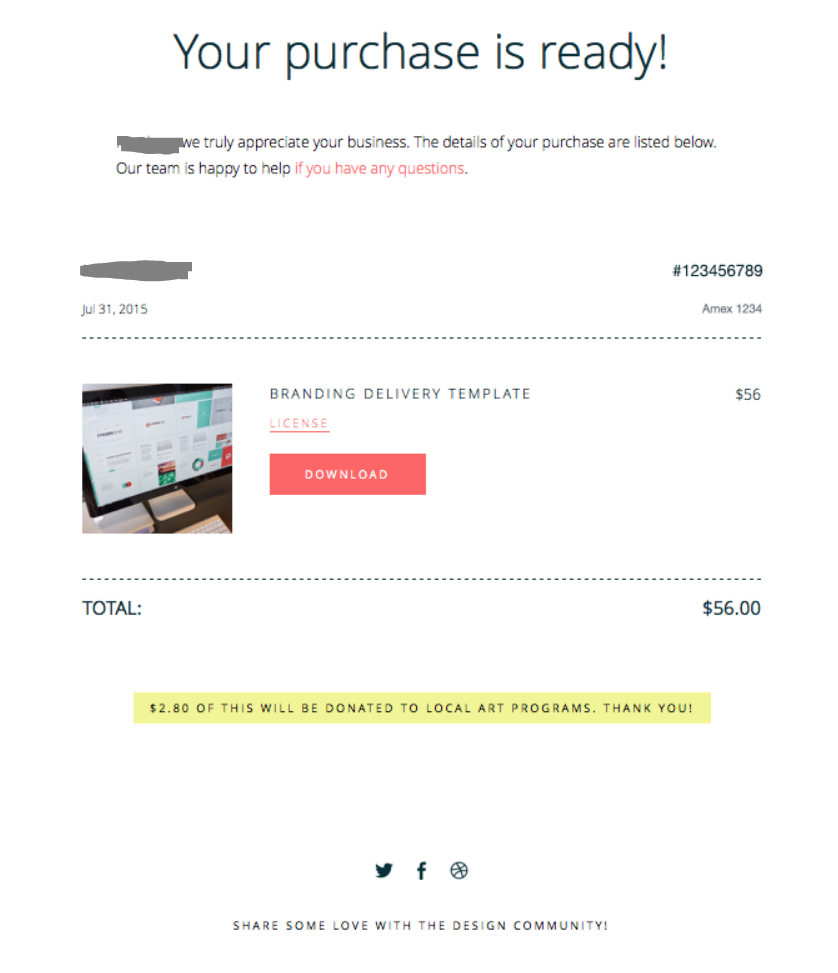
Post Purchase Confirmation Email Example from the Design Community
5. Support Ticket Post-Submission Email
When engaged in eCommerce, customer support is essential, and offering email follow up on a chat or call helps encourage brand loyalty. Support tickets are about something gone wrong or a mistake made, so the first thing to say is “I’m sorry”. The mea culpa is crucial.
Let the customer know you’ve addressed the issue and are working to make sure it doesn’t happen again. Also, solicit feedback on the customer service interaction. This email is a chance to rebuild goodwill so offer a reward to come back and try again with your eShop after you make things right.
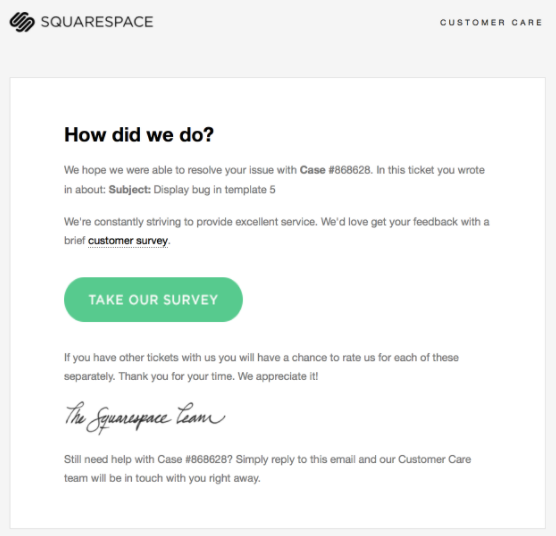
Customer Support Email Responder from Square Space
6. Inactive Customer Follow Up Email
When a customer hasn’t bought from you in a while, there’s an opportunity for revenue there. This is also known as a “win back” email and can boost eCommerce sales remarkably. Choose a time lapse to trigger this activity (3-6 months since the last sale) and get started.
In the follow up email, remind them of the last transaction, encourage them to make another, and incent them with info about related products or new offerings. Include a coupon with an expiry. Follow up a few days before the coupon expires then the day it runs out before you give up on them.
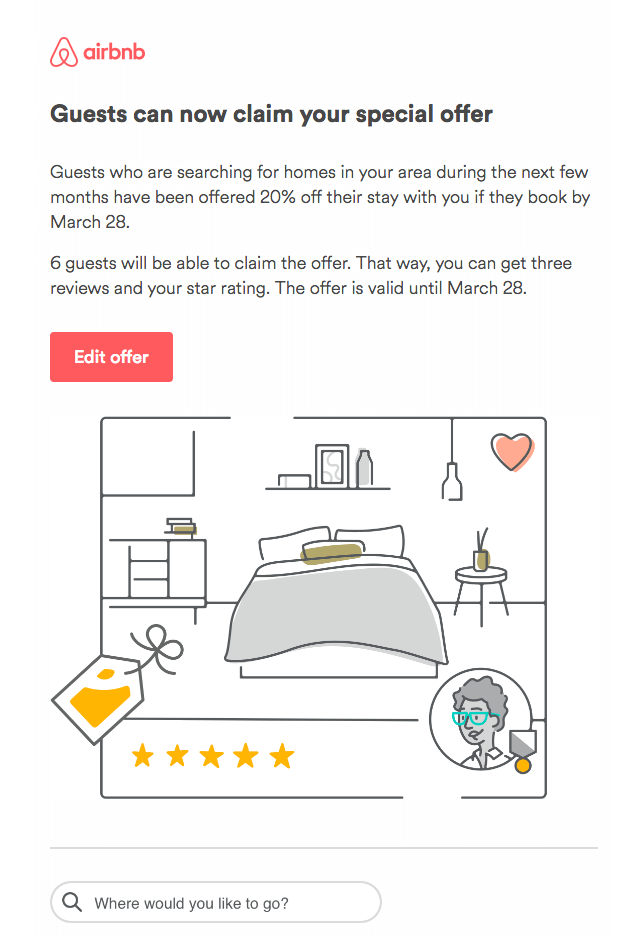
Example of reactivation promotion from AirBnB
7. Follow Up Your Promotions Always
Studies show just a 5% increase in retention can increase profits by 25-95% so when you’re running a promotion, it’s the opportunity to turn an occasional buyer into a loyal recurring purchaser. When you’re running a great promo, let customers know it’s happening, then remind them before it ends.
This is something many email marketing programs neglect yet is one of the most profitable you can send. Remind the customer of the promo and when it ends to create the sense of scarcity and prod them into transacting. Consider a series that counts down from 7 days to one day to a few hours.
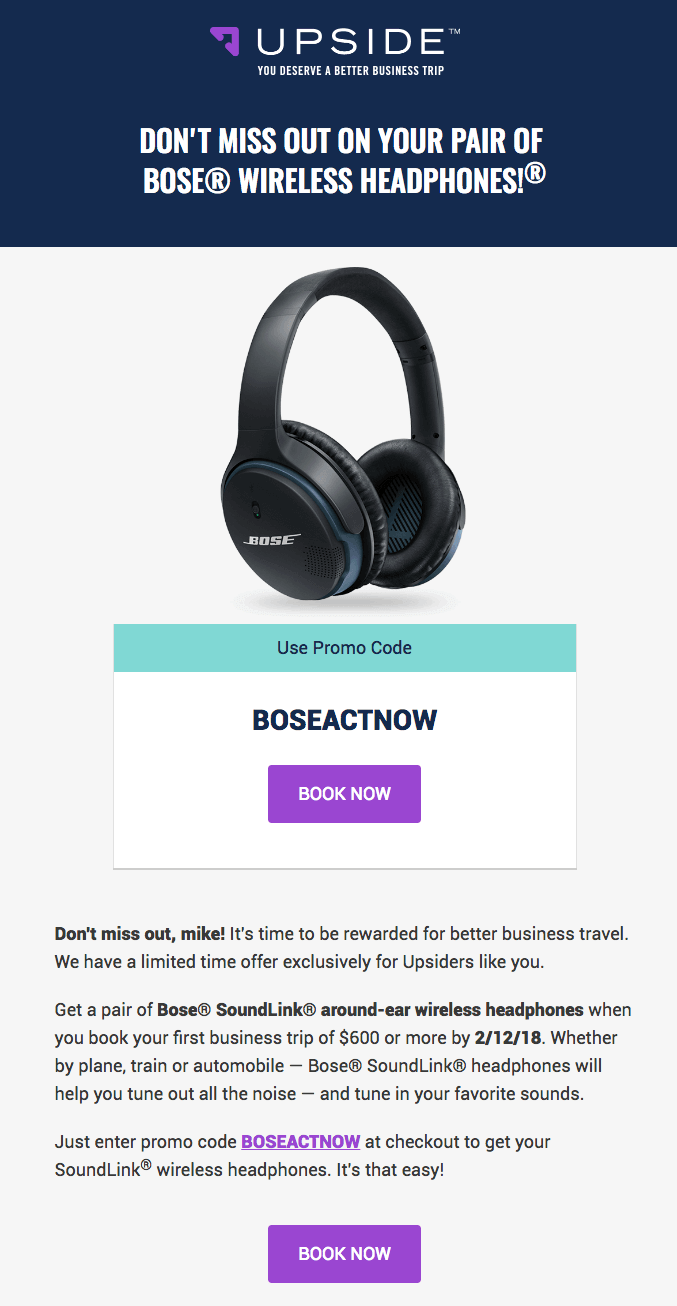
Personal Promotion Follow Up example from Upside.
Take Automation a Step Further
Interacting with your customers via email is a brick in the wall of your sales, retention, and profitability strategy. Every eCommerce business and eShop can benefit from improving the communication chain with customers and prospects. Leveraging rewards every time a customer interacts is key.
When customers buy, review, contact, and tag you, those are all opportunities to trigger rewards and show your customers that they are appreciated, listened to, and matter. The best thing about these communications is that they increase revenue yet can be fully automated, so the cost is minimal.
When you’re ready to test the power of marketing automation to enrich your customer communication pipeline, ContactPigeon is ready to assist. To see how we can help your eCommerce business, check out these best practices for email follow up for an abandoned cart.


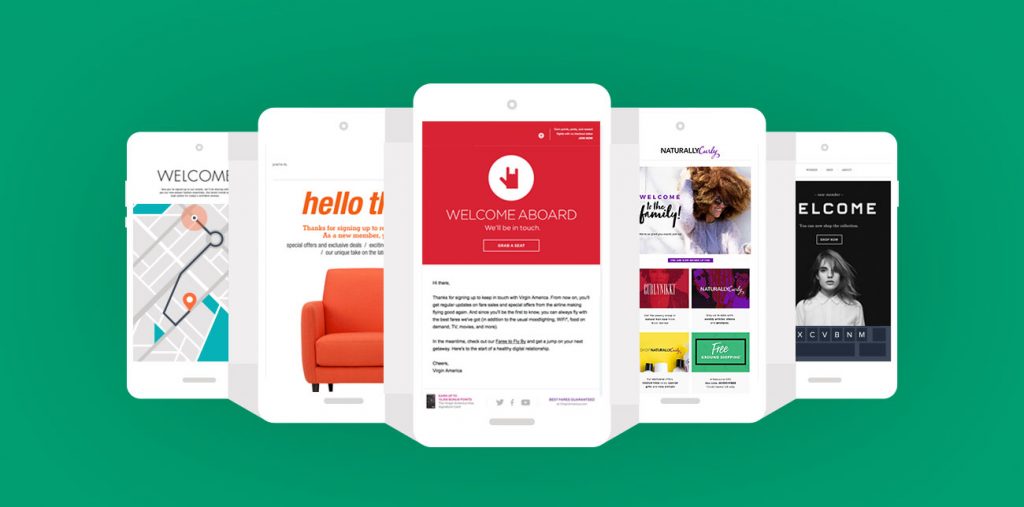

![Benchmarking Growth Strategies of Top Fashion Retailers [Study]](https://blog.contactpigeon.com/wp-content/uploads/2025/11/top-fashion-retailers.jpg)